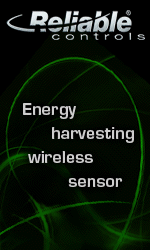EMAIL INTERVIEW
- Chris Kotting and
Chris Kotting, Executive Director,
EIS Alliance
The EIS
Alliance is a 501(c not for profit corporation dedicated to the
development of open standards and architectures supporting customer
owned, operated and controlled equipment in a Smart Grid
environment. Prior to being named the Executive Director of the
EIS Alliance, Chris Kotting worked in various infrastructure and policy
areas in Electricity, Gas and Telecommunications sectors with the
Public Utilities Commission of Ohio. In addition to his work with
the EIS Alliance, Chris is Co-Founder and Senior Consultant with
ThinkSmartGrid, LLC.
An Introduction to the EIS Alliance.
The EIS Alliance was formed to develop, and promote the
development of, standards for information about energy usage on the
customer side of the meter.
Articles
Interviews
Releases
New Products
Reviews
Editorial
Events
Sponsors
Site Search
Newsletters

Archives
Past Issues
Home
Editors
eDucation

Training
Links
Software
Subscribe
Sinclair:
Sinclair:
Kotting: Sure, there are energy management systems as part of
both industrial process control systems and building management systems
in large commercial buildings. Three things make the EIS Alliance
effort different.
First, the development of information standards. For the most
part, existing systems are a product of either custom integration of
hardware from different (and not always compatible vendors, or
single-source systems. With the development of standardized ways
of expressing energy usage and requirements, equipment is being
developed that will interoperate smoothly with equipment from multiple
vendors, as well as communicating with information provided by
equipment and systems outside of the customer environment. This
will lower the cost of designing and manufacturing energy management
systems and hardware, as well as the cost of implementing them.
Second, the ability of CEMS to integrate information from beyond the
customer meter, whether it’s usage information provided by the Utility,
weather information from forecasters, or market information. The
ability to access information from beyond the meter to manage customer
systems and equipment can go beyond optimizing energy usage, to being
able to provide services to the Utility, like frequency regulation and
VAR support, for which the customer (or as it sometimes said in Smart
Grid discussions, the "prosumer" gets paid.
Third, the cost of existing energy management systems makes them
practical only for large facilities. The EIS Alliance standards
focus on the customer side of the meter, but across all sizes and kinds
of customer. This means that the standards, as well as the cost
reductions, will open up new markets for energy management systems in
smaller commercial and residential sectors. Currently, energy
management systems are common in industrial and large commercial
facilities, but rare to nonexistent in the small commercial and
residential markets.
Sinclair:
Kotting: No way. The customer controls their equipment, but the
customer may well make different decisions about what equipment to use,
when and how, given that there will be a lot more information about how
to manage costs.
Industrial customers have to be able to manage their processes without
concern that a decision made by some other entity will alter or stop
those processes.
Commercial customers are required by contract to maintain certain
environments within the building envelope. Here again, the
equipment that maintains those environments has to be able to function
without outside interference, once the decisions about how to operate
have been made.
Residential customers similarly want to maintain control of their own living space, and also want to protect their privacy.
Actually, the Utility taking control of customer equipment in a Smart
Grid environment is a nightmare scenario for the Utility, even though
some of them don’t realize it yet. Managing, communicating, and
protecting all that information is an immense, complicated and costly
challenge to meet, and it can be avoided by leaving control of customer
equipment in the customers’ hands. Provide the customer with
better information, and let the customer (or the customer’s systems
make intelligent decisions.
Sinclair:
Sinclair:
footer
[Click Banner To Learn More]
[Home Page] [The
Automator] [About] [Subscribe
] <a href="mailto:news@automatedbuildings.
Читать полностью или написать коммент.. Про установку спутниковых тарелок в Московской областиhttp://tarelka-tv.ru/

Комментариев нет:
Отправить комментарий